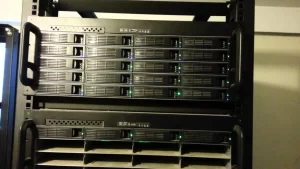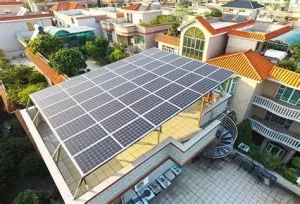Installation and Maintenance of Solar Panel Battery Bank for Home
In recent years, the adoption of solar energy has surged as individuals and communities seek sustainable and cost-effective alternatives to traditional energy sources. A crucial component of any solar energy system, especially for homes aiming to maximize self-sufficiency, is the solar panel battery bank. This article explores the installation process and essential maintenance practices for a solar panel battery bank, highlighting key considerations and benefits.
Installation Process
Planning and Assessment:
Before installation begins, a thorough assessment of energy needs and solar potential is essential. Factors such as household energy consumption patterns, available sunlight, and regulatory requirements must be considered. This stage often involves consultation with solar energy professionals to determine the optimal size and type of battery bank required.
Selection of Battery Bank:
Choosing the right battery bank involves evaluating several factors, including capacity (measured in kilowatt-hours, kWh), cycle life, depth of discharge (DoD), efficiency, and cost. Common types of batteries used in solar energy systems include lead-acid (flooded, gel, AGM) and lithium-ion batteries, each with its advantages and suitability depending on specific needs.
Installation of Batteries:
Once selected, batteries are installed in a well-ventilated and secure location, typically indoors or in a weatherproof enclosure if installed outdoors. Proper ventilation is crucial to dissipate heat generated during charging and discharging cycles.
Connection to Solar Panels and Inverter:
The battery bank is then integrated into the overall solar energy system. Solar panels are connected to charge controllers, which regulate the charging process to prevent overcharging or undercharging of batteries. An inverter converts the direct current (DC) electricity stored in the batteries into alternating current (AC) electricity used by household appliances.
Testing and Commissioning:
After installation, the entire system undergoes rigorous testing to ensure proper functionality and efficiency. This includes testing voltage levels, charging rates, and the seamless transition between solar-generated and grid electricity when necessary.

Maintenance Practices
Regular Inspections:
Scheduled inspections are critical to monitor the condition of batteries, connections, and overall system performance. Visual checks for leaks, corrosion, or physical damage should be conducted routinely.
Cleaning and Ventilation:
Keep batteries and surrounding areas clean to prevent dust buildup and ensure proper ventilation. Dirty batteries or enclosures can lead to overheating and reduced efficiency.
Monitoring Battery Levels:
Utilize monitoring systems to track battery charge levels, discharge rates, and overall performance metrics. This data helps in optimizing energy usage and identifying potential issues early.
Temperature Management:
Maintain batteries within recommended temperature ranges (typically 20-25°C or 68-77°F) to extend their lifespan and improve efficiency. Extreme temperatures can degrade battery performance significantly.
Battery Equalization and Maintenance Charging:
Periodically perform battery equalization (if applicable) and maintenance charging to balance cell voltages and prevent capacity loss due to stratification.
Safety Precautions:
Follow manufacturer guidelines and safety protocols during maintenance tasks, including wearing protective gear and ensuring proper handling of battery acid (for lead-acid batteries).
Benefits of Solar Panel Battery Bank
Energy Independence: Reduces reliance on grid electricity, especially during peak demand periods or power outages.
Cost Savings: Offsets energy costs over time, potentially leading to significant savings on electricity bills.
Environmental Impact: Reduces carbon footprint by utilizing clean, renewable energy sources.
Long-term Investment: Increases property value and provides a reliable energy solution for years to come.
Conclusion
The installation and maintenance of a solar panel battery bank are crucial steps in maximizing the benefits of solar energy for residential use. By carefully planning the installation process and adhering to regular maintenance practices, homeowners can ensure optimal performance, longevity, and efficiency of their solar energy systems. Embracing solar power not only contributes to environmental sustainability but also offers financial benefits and energy security in the face of evolving energy landscapes.
In conclusion, investing in a solar panel battery bank is not just about adopting a sustainable energy source but also about securing a reliable and cost-effective energy solution for the future.
Contact us
- Email:[email protected]
- Tel: +86 13651638099
- Address: 333 Fengcun Road, Fengxian District, Shanghai
Get A Quote Now!

Read more

Unveiling Photovoltaic+Energy Storage: Four Major Application Scenarios Leading the Future of Energy
In this way, the energy landscape is evolving, and one of the most thrilling developments in renewables is the integration of photovoltaics energy storage.

From Theory to Practice: Four Methods for Estimating Photovoltaic Power Generation
Photovoltaic power generation has become an essential part of modern energy solutions, particularly in home solar systems and distributed power applications

Rack-Mounted Lithium Iron Batteries: Creating Efficient and Reliable Energy Storage Solutions
When it comes to modern energy solutions, rack-mounted lithium iron batteries are taking center stage in a variety of industries. Whether you’re powering data centers, stabilizing energy for households, or keeping critical systems online at 5G base stations, these batteries have become the unsung heroes of our electrified world.

Late Night Energy Saving Tips: How to Maximize Electricity Savings During Off-Peak Hours
With rising energy costs, homeowners are increasingly exploring innovative ways to save on their electricity bills. One effective approach is utilizing off-peak hours—times when electricity rates are significantly lower due to reduced demand.
